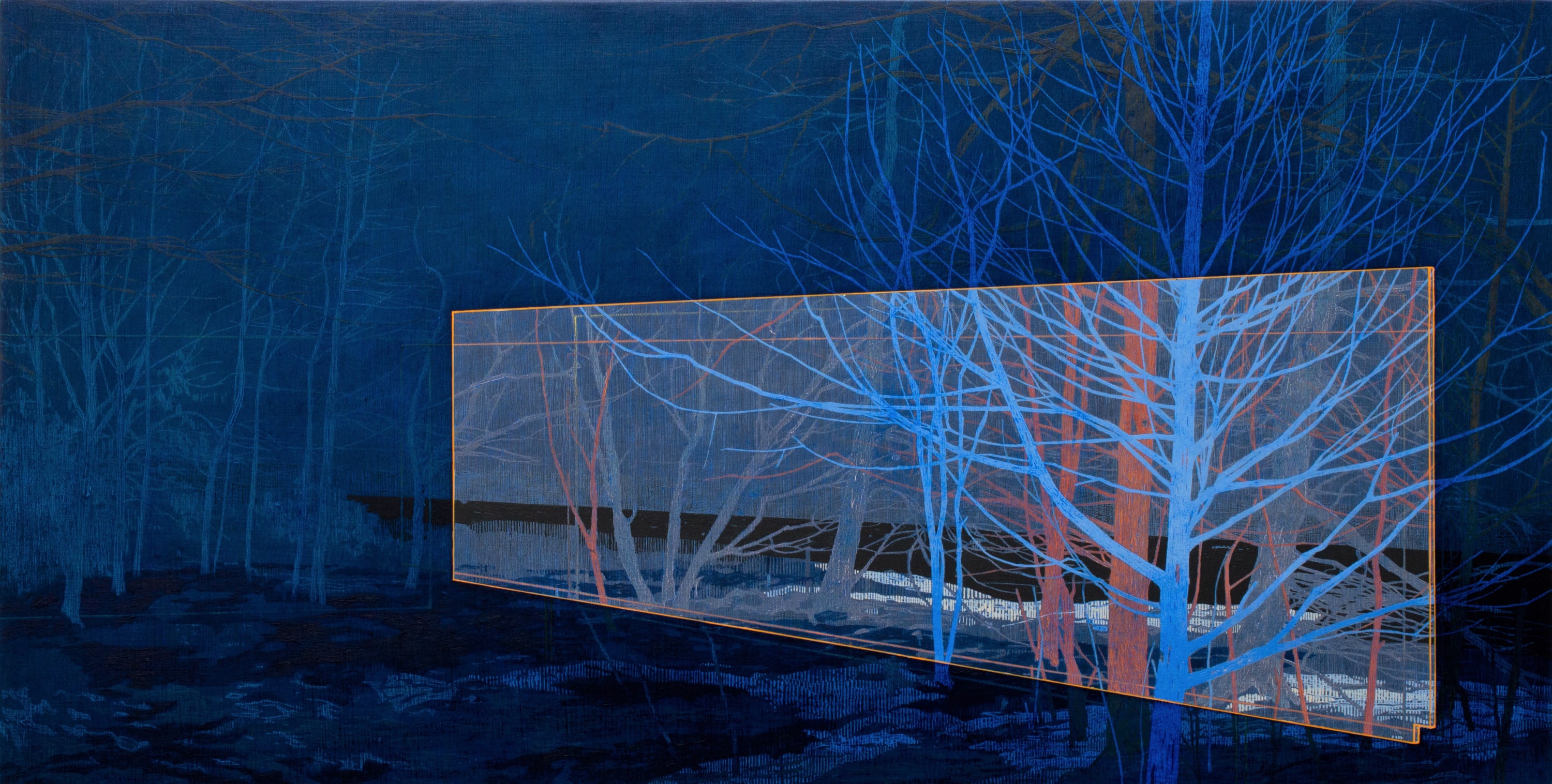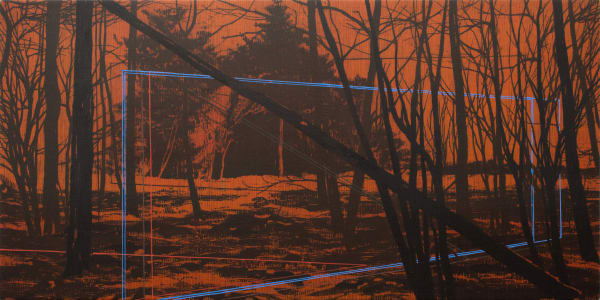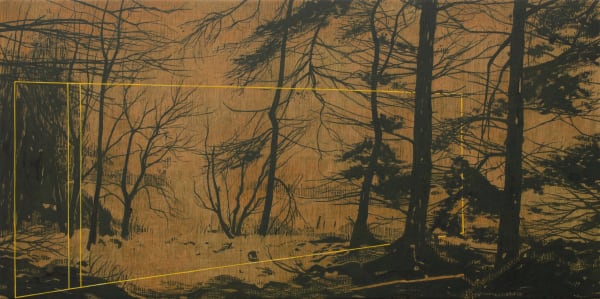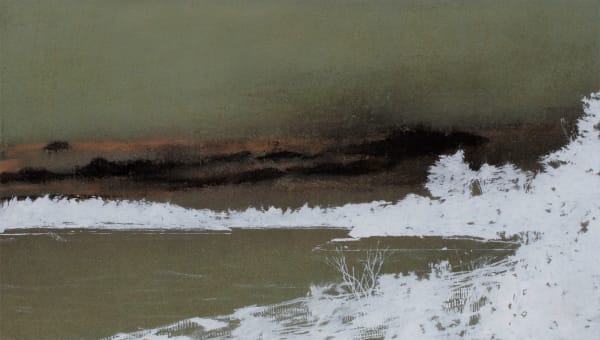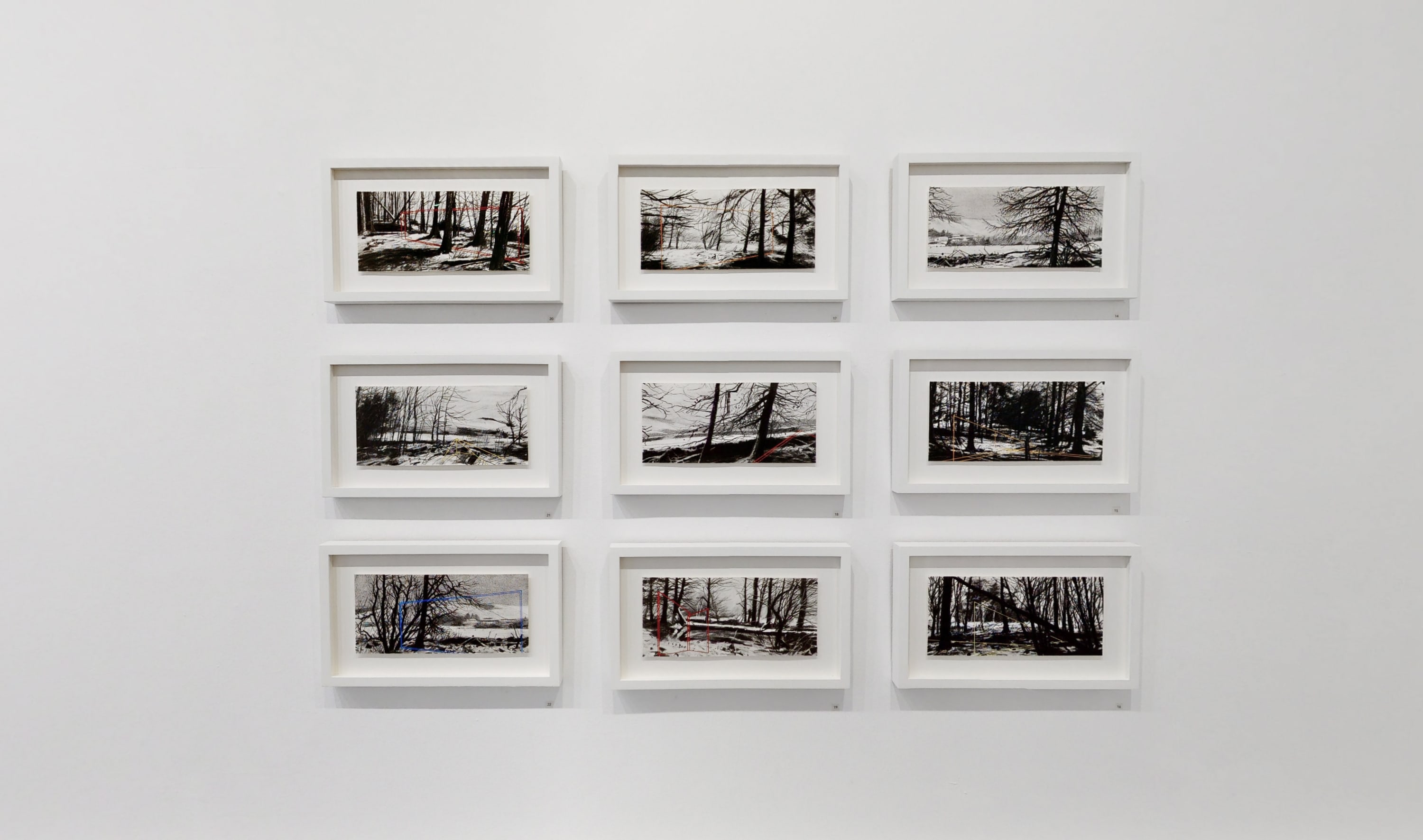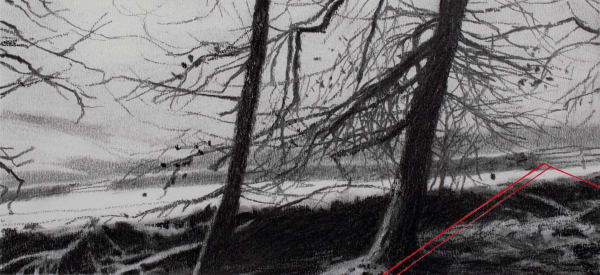-
 Andrew Mackenzie, Dark Woodland (Red Structure), Oil on panel, 100 x 200 cm
Andrew Mackenzie, Dark Woodland (Red Structure), Oil on panel, 100 x 200 cm -
&Gallery is thrilled to present the second solo show of Scottish artist Andrew Mackenzie. The exhibition features an ensemble of 11 paintings and 13 drawings.
To know, that is, with the knowledge that is a process of living. (Shepherd, 2011, p.1)
There is no mistaking an Andrew Mackenzie painting. Silhouettes of trees loom out of dark foreboding landscapes. Scots pine, Douglas fir, the brittle bare branches of ash, elder and birch create a lattice work of organic connections fanning out across the picture plane. Each image punctuated by lone trees and sparse linear structures often spotlighted in vibrant oranges, reds, and magentas. And, while the visual essence of earlier work persists in this new series, we also see a subtle but important change taking place. Stridently contrasting trees have become quieter, more restrained, drawing us in to these visionary yet haunting worlds.
-
 Andrew Mackenzie, Into the Wood (Velvet Deep Dusk), Oil on panel, 40 x 79cm
Andrew Mackenzie, Into the Wood (Velvet Deep Dusk), Oil on panel, 40 x 79cm -
DUSK, when colour and shadows deepen before folding into the darkness of night, is the time-of-day Mackenzie likes best. The charcoal drawings and oil paintings in this exhibition speak of winter walks in the wooded landscape close to his home in the Scottish Borders. The viewpoint is human in scale. From rough frozen ground we look out across flat bodies of water or up at plunging waterfalls. In Dark Woodland (Red Structure) our gaze travels between the solemn trunks of tall trees as their crowns stretch above us beyond the complexity of Mackenzie’s meticulously rendered paint-woven surface. Repeated lines of pristine white paint traverse thin pale lilac washes as irregular patches of snow dust the land before us. These landscapes may be figureless, but they are very much about our inescapable entanglement with the natural world.
In this body of work the readily identifiable architectural scaffolds of earlier pieces have given way to increasingly abstracted linear forms. Each one is nestled seamlessly within the geography of the local landscape. With this visual shorthand for the human made Mackenzie has found a method of disrupting commonplace ideas of nature as separate from us - something to be looked at and admired from afar. Instead, these succinct hieroglyphs point to a continuing history of place creation where humans and their environments are unshakeably interwoven.
-

Andrew Mackenzie, Reservoir (Wall), Detail, Oil on panel, 107 x 180 cm
-
-
 Andrew Mackenzie, Dark Woodland (Red Structure)
Andrew Mackenzie, Dark Woodland (Red Structure) -
 Andrew Mackenzie, Pines by the reservoir
Andrew Mackenzie, Pines by the reservoir -
 Andrew MackenzieSnow Covered Fallen Pine (Red Structure)Oil on panel30 x 60 cm
Andrew MackenzieSnow Covered Fallen Pine (Red Structure)Oil on panel30 x 60 cm -
 Andrew Mackenzie, Frozen Reservoir (Door)
Andrew Mackenzie, Frozen Reservoir (Door)
-
-

Andrew Mackenzie in his studio
-

-
Available works on paper
-
3D Tour - Virtual Exhibition

